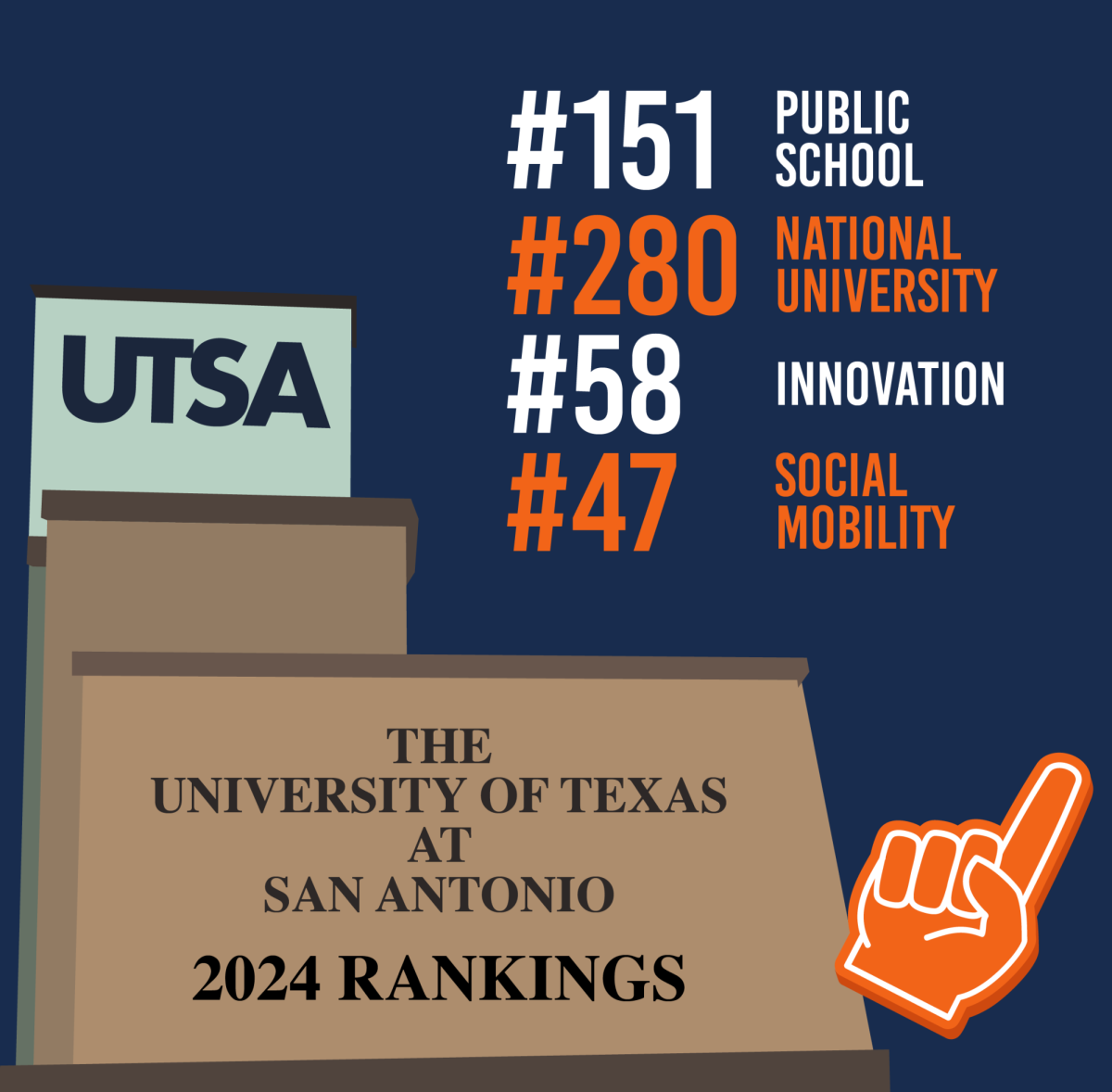The U.S. Department of Education has recently awarded UTSA and Alamo Colleges a five-year $3.2 million grant to initiate PIVOT, an academic suc- cess program to increase student involvement, reten- tion and graduation rates.
The PIVOT program will focus primarily on low socioeconomic students, first-time, full-time His- panic students and first- generation students. Ac- cording to the UTSA Office of Institutional Research, which measured students’ six-year graduation rates, first- generation students
at UTSA make up 47 per- cent of the student body, yet only 32 percent gradu- ate in six years. The His- panic population at UTSA is 51 percent while only 36 percent graduate in six years and the economically disadvantaged population is 44 percent while 38 per- cent graduate in six years.
ThePIVOTprogramaims to boost UTSA’s low gradu- ation rates by creating sup- port communities that will improve students’ overall success through the fol- lowing four sub-programs.
The Alamo Runners pro- gram will help students en- rolled in one of the Alamo colleges while they were admitted into UTSA. This program will appoint a peer mentor who will lead
students into a dual enroll- ment where 12 credit hours will be taken at an Alamo college and the other three credit hours taken at UTSA.
Through this initiative, students will become ac- customed to a four-year university and its resourc- es. The goal for the Alamo Runners program is for students to first gradu- ate from an Alamo Col- lege and then transfer and graduate from UTSA.
The First to Go and Grad- uate program (F2G&G) aims to help first-genera- tion students, which make up almost half of UTSA’s freshman class, by creat- ing a coaching program made up of first-genera- tion faculty and students.
The program will have a
program manager as well as peer mentors. UTSA will also initiate F2G&G Coun- cil, which will propose solu- tions for any practices with- in the institution that may hinder students’ success.
The Math Matters initia- tive will enable UTSA to redesign the pre-requisite algebra course for engi- neering and science ma- jors, MAT 1073. The rede- sign of the course will use the National Center for Academic Transformation emporium model, which will promote an active use of mathematics with- in the classroom setting.
The program intends to improve the passing rate of MAT 1073, which in turn will increase the retention rates of engineer and sci-
ence majors. Students who are dually enrolled at an Alamo College and UTSA will also able to take the course when it is in effect.
The Roadrunner Transi- tion Experience program (RTE) will appoint peer mentors and a program manager to provide help and support for UTSA transfer students. RTE also intends to create events, programs and addition- al resources to increase transfer student gradua- tion and retention rates. The PIVOT program sees that the appointment of fac- ulty that resonate with stu- dents is crucial to the suc- cess of the program. One of UTSA’s faculty members,
tion and retention rates. The PIVOT program sees that the appointment of fac- ulty that resonate with stu- dents is crucial to the suc- cess of the program. One of UTSA’s faculty members, Associate Professor of His- tory Rhonda Gonzales, will serve as director of the PIVOT program. Gon- zales is a first-generation student who was in the
American Council on Edu- cation’s Fellows Program. During her fellowship she visited about 30 universi- ties in the U.S. to study the best methods for student success. With her findings and her research on UTSA transfer students and cur- rent students, she developed a proposal along with her colleagues to implement the PIVOT program at UTSA.
The four initiatives pro- vided by the PIVOT pro- gram will address a va- riety of situations many students encounter and will provide help for stu- dents who may need ad- ditional support through their college experience.
José Santos, a first genera- tion freshman kinesiology major, says that although his parents were always very
encouraging and support- ive of his desire to attend college, he would like for there to be more common knowledge of programs and other support systems that aim to help first-gen- eration Hispanic students.
“I’ve heard of some schol- arships that help Hispanic or first-generation stu- dents, but I haven’t heard very much about programs
that advise or support those students,” Santos said. Although PIVOT is in its initial stage, it is an impor- tant goal for students to be aware of their services. wThe program will serve as an additional support system for students in their pursuit of graduation.





